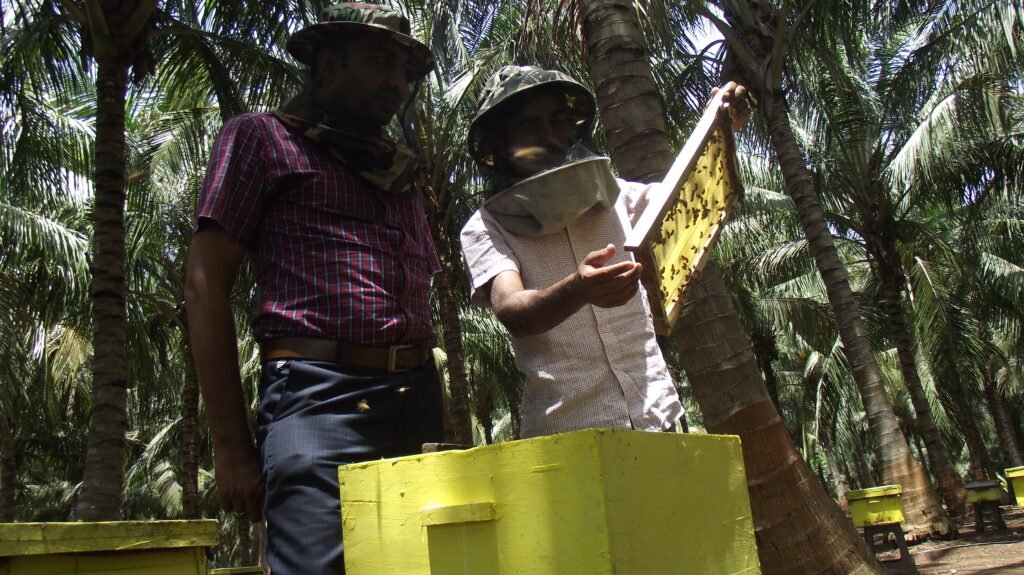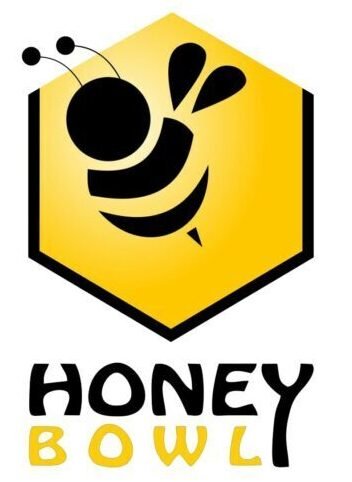

Beekeeping / Apiculture
Beekeeping, also known as apiculture, is the practice of maintaining colonies of honeybees for the purpose of harvesting honey, beeswax, pollen, royal jelly, and other bee products, as well as for pollination services. Beekeeping has been practiced for thousands of years and plays a vital role in agriculture, biodiversity, and food production. Here’s an overview of beekeeping:
Setting Up a Hive:
- Beekeepers typically start by acquiring or building beehives. The most common type of hive used in modern beekeeping is the Langstroth hive, which consists of stacked boxes containing frames where bees build comb and store honey.
- Other hive designs, such as top-bar hives and Warre hives, are also used, each with its own advantages and disadvantages.
Acquiring Bees:
- Beekeepers acquire honey bee colonies through various means, including purchasing packaged bees, nucleus colonies (nucs), or capturing swarms.
- A colony typically consists of one queen bee, worker bees (which are female), and drones (which are male).
Hive Management:
- Beekeepers regularly inspect their hives to ensure the health and productivity of the colonies. They check for signs of disease, pests, and queen vitality.
- Management tasks include monitoring honey production, providing supplemental food when necessary, managing hive ventilation, and preventing swarming.
Harvesting Honey and Bee Products:
- Honey harvesting is typically done during the nectar flow when bees are actively foraging and storing honey in the hive.
- Beekeepers use various methods to extract honey from the comb, including centrifugal extraction, crushing and straining, and comb honey production.
- In addition to honey, beekeepers may also harvest beeswax, pollen, royal jelly, propolis, and bee venom for various purposes.
Pollination Services:
- Honeybees are important pollinators for many agricultural crops and wild plants. Beekeepers often rent out their colonies to farmers for pollination services, especially for crops like almonds, apples, blueberries, and melons.
- Pollination services provided by honeybees contribute to increased crop yields and improved fruit quality.
Beekeeping Equipment:
- Beekeepers use a variety of specialized equipment and tools, including hive bodies, frames, smokers, bee veils, hive tools, and protective clothing, to manage their colonies safely and effectively.
Challenges and Concerns:
- Beekeeping faces numerous challenges, including diseases and pests such as Varroa mites, Nosema, and American foulbrood, as well as habitat loss, pesticide exposure, and climate change.
- Sustainable beekeeping practices, including integrated pest management (IPM) strategies, genetic diversity conservation, and habitat restoration, are important for promoting bee health and resilience.
Overall, beekeeping is a rewarding and important practice that contributes to food security, biodiversity conservation, and ecosystem health. By responsibly managing honey bee colonies, beekeepers play a crucial role in supporting agricultural systems and maintaining pollination services for a variety of crops and ecosystems.

Outcome of Beekeeping
The income from beekeeping can vary widely depending on various factors such as the scale of operation, location, honeybee health, beekeeper’s experience, market conditions, and the types of products produced and sold. Here are some key points regarding the income potential of beekeeping:
Honey Production: Honey is one of the primary products of beekeeping and can be a significant source of income for beekeepers. The amount of honey produced per hive depends on factors such as the availability of nectar sources, weather conditions, and the strength and health of the bee colony. Beekeepers can sell honey directly to consumers, local markets, retailers, or through online platforms.
Pollination Services: Many beekeepers also generate income by renting out their beehives to farmers for pollination services. Honeybees are essential pollinators for many crops, and farmers often pay beekeepers to bring their hives to pollinate crops such as almonds, apples, blueberries, and melons. Pollination fees can vary depending on the crop and the size of the pollination contract.
Other Bee Products: In addition to honey, beekeepers can generate income from other bee products such as beeswax, pollen, royal jelly, propolis, and bee venom. These products have various applications in cosmetics, skincare, health supplements, and alternative medicine. The demand for these products may vary depending on consumer preferences and market trends.
Value-Added Products: Some beekeepers also create value-added products such as flavored honey, honey-based condiments, beeswax candles, and artisanal skincare products. Value-added products can command higher prices and offer additional revenue streams for beekeepers.
Local Regulations and Certification: Beekeepers may need to comply with local regulations and obtain certifications to sell honey and other bee products commercially. Certification programs such as organic certification or bee-friendly certification can enhance the marketability of bee products and potentially increase income.
Challenges and Costs: It’s important to consider the costs associated with beekeeping, including equipment, hive maintenance, beekeeping supplies, pest management, and veterinary care. Beekeeping also requires time, labor, and expertise to manage bee colonies effectively and sustainably. Additionally, beekeepers may face challenges such as diseases, pests, weather events, and fluctuations in honey prices.
Overall, while beekeeping can be a rewarding and profitable venture, it requires careful planning, investment, and dedication to succeed. Beekeepers who prioritize bee health, sustainable practices, and market awareness are more likely to achieve success and generate income from their beekeeping operations.
